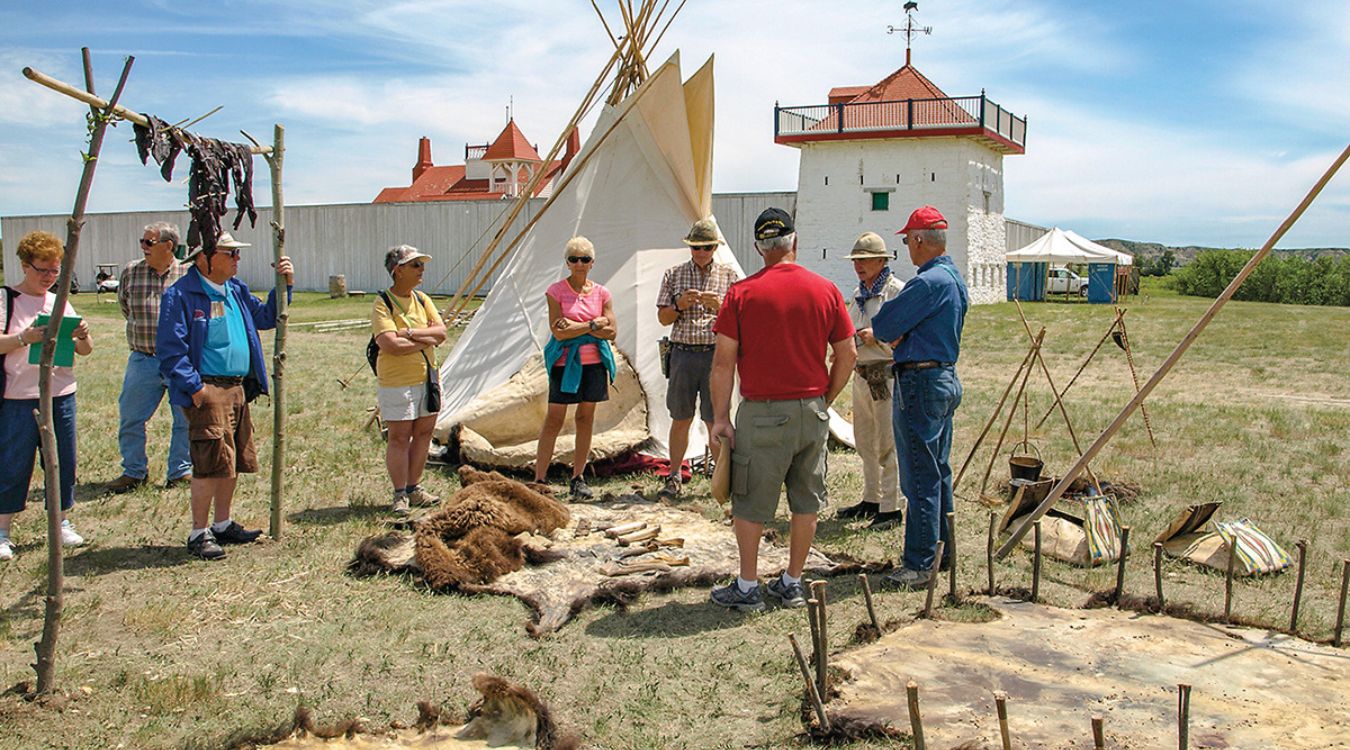Hidden Trading Posts Of North Dakota’s Fort Clark

Have you ever wondered about the hidden trading posts of North Dakota's Fort Clark? This historic site, nestled along the Missouri River, holds secrets of early American trade and Native American culture. Established in the early 1800s, Fort Clark became a bustling hub for fur traders and indigenous tribes. Imagine walking through the remnants of old buildings, feeling the whispers of history in the air. From the Mandan and Arikara tribes to European settlers, many stories unfolded here. Whether you're a history buff or just curious, exploring Fort Clark offers a unique glimpse into America's past. Ready to uncover these hidden gems? Let's dive in!
Hidden Trading Posts of North Dakota's Fort Clark
Fort Clark, a historical gem in North Dakota, holds secrets of trading posts that once buzzed with activity. These posts were vital hubs for trade between Native Americans and European settlers. Let's uncover some of these hidden trading posts that played a crucial role in shaping the region's history.
1. Fort Clark Trading Post
The Fort Clark Trading Post stands as a testament to the bustling trade that occurred here. Established in the early 1800s, it served as a major trading hub for the Mandan, Hidatsa, and Arikara tribes.
- Location: Near present-day Washburn, North Dakota
- Significance: Facilitated trade of furs, tools, and food between Native Americans and European settlers
- Historical Highlight: The post was a key site during the smallpox epidemic of 1837, which tragically affected the local tribes
2. Fort Mandan
Fort Mandan, though primarily known as the winter quarters for the Lewis and Clark Expedition, also functioned as a trading post. The fort provided a safe haven for trade and interaction between explorers and Native Americans.
- Location: Near present-day Washburn, North Dakota
- Significance: Served as a base for the Lewis and Clark Expedition during the winter of 1804-1805
- Historical Highlight: The fort was a place of cultural exchange and trade, fostering relationships between the expedition members and local tribes
3. Fort Berthold
Fort Berthold was another significant trading post in the region. It played a crucial role in the fur trade and was a meeting point for various tribes and traders.
- Location: Near present-day New Town, North Dakota
- Significance: Central hub for the fur trade in the mid-1800s
- Historical Highlight: The post was instrumental in the economic and cultural exchanges between Native Americans and European settlers
4. Fort Union Trading Post
Fort Union Trading Post, located at the confluence of the Missouri and Yellowstone Rivers, was one of the most important fur trading posts on the Upper Missouri River.
- Location: Near present-day Williston, North Dakota
- Significance: Major center for the fur trade from 1828 to 1867
- Historical Highlight: The post was a bustling marketplace where various tribes, including the Assiniboine, Crow, and Blackfoot, traded furs for goods
5. Fort Buford
Fort Buford, established in 1866, served as a military post but also became a significant trading post. It was a strategic location for trade and military operations.
- Location: Near present-day Williston, North Dakota
- Significance: Played a dual role as a military and trading post
- Historical Highlight: The fort witnessed the surrender of Sitting Bull in 1881, marking a significant moment in Native American history
6. Fort Rice
Fort Rice, established in 1864, was a military post that also facilitated trade. It provided protection for settlers and traders in the region.
- Location: Near present-day Mandan, North Dakota
- Significance: Offered security and trade opportunities for settlers and Native Americans
- Historical Highlight: The fort played a role in the conflicts between settlers and Native American tribes during the westward expansion
7. Fort Abraham Lincoln
Fort Abraham Lincoln, known for its association with General George Custer, also served as a trading post. It was a key site for trade and military operations.
- Location: Near present-day Mandan, North Dakota
- Significance: Combined military and trading functions
- Historical Highlight: The fort was the departure point for Custer's ill-fated expedition to the Battle of the Little Bighorn
8. Fort Stevenson
Fort Stevenson, established in 1867, was another military post that facilitated trade. It provided a secure environment for traders and settlers.
- Location: Near present-day Garrison, North Dakota
- Significance: Protected trade routes and settlers in the region
- Historical Highlight: The fort played a role in the Indian Wars, providing a base for military operations and trade activities
Discover Fort Clark's Hidden Gems
Fort Clark's hidden trading posts offer a unique glimpse into North Dakota's rich history. These sites reveal stories of Native American tribes, early settlers, and the fur trade that shaped the region. Exploring these historical landmarks provides a deeper understanding of the cultural exchanges and economic activities that took place here.
Visiting Fort Clark isn't just about seeing old buildings; it's about connecting with the past. Walking through these trading posts, you can almost hear the bustling markets and feel the vibrant energy of a bygone era. It's a chance to appreciate the resilience and ingenuity of those who lived and traded here.
So, if you're looking for an adventure that combines history, culture, and a bit of mystery, Fort Clark's hidden trading posts are a must-see. Pack your bags, grab a map, and get ready to uncover the secrets of this fascinating destination.

